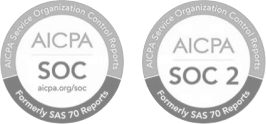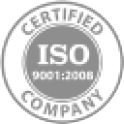The Power of Organizational Agility in Global Payroll:
Article Navigation

Steve Goldberg
Global HCM & HR Tech Advisor
The What, Why and How of Organizational Agility
Let’s start with a practical definition of organizational agility and highlight a few surrounding concepts. Organizational agility is the ability to be “out in front” of both business risks and business opportunities by determining when to pivot with respect to business plans, priorities or business strategies, and understanding and pursuing the best options.
This ability to leverage organizational agility capabilities, assets and tools to effect needed changes quickly is a huge competitive advantage, and therefore it’s what most successful enterprises have in common. Fundamentally, elevating organizational agility comes from picking up on cues and signals about different aspects of the internal or external operating environment.
Moreover, when these cues and signals relate to the workforce or HR/HCM domain, I call this “Adaptive HCM.”
Industry Tidbit #1
92% of C-level executives believe organizational agility is critical to business success, yet only 27% consider their businesses highly agile.


Examples of organizational agility might include acting on indications that an employer brand is losing its attractiveness to top talent (which will adversely impact longer-term business performance) such as seeing a lower percentage of great candidates accepting job offers; or when an organization’s global HR/payroll infrastructure is determined to be ripe for optimization because increased spending in this area is not producing the expected outcomes of improved operating efficiencies and a better experience for internal stakeholders. And ideally, these signals or cues automatically nudge or guide in the need for action and the best path to improve the situation.
Going Global is No Small Task
While it’s perhaps obvious, making the transition from being a regional player to a global one usually involves re-examining sourcing and delivery strategies as well as the supporting operations and infrastructure.
I will highlight four related topics here that arguably warrant more attention than they sometimes get.
Secondly, notwithstanding many recent advances in technology tools and approaches aimed at getting disparate systems to inter-operate better (e.g., integrate real-time with minimal business disruption), one might still be hard pressed to find a global technology executive that views the inter-operability of heterogeneous systems as “fairly straightforward and easy to manage.”
And it’s not just the business systems, operating platforms and architectures which need to be harmonized or have their differences normalized. It’s also potentially different data models as well as varied support practices and processes from vendor partners as embodied in different SLA’s from in-country providers (“ICPs”) as an example.
Notwithstanding these factors, enterprises are apparently not at all deterred from going global or from expanding their presence in core countries.
SaaS Technology vs. Outsourcing Tradeoffs in Global Payroll
A well-traveled axiom in business is “there are horses for courses.” This basically means that one flavor of a services or solutions delivery model will not yield the same or optimal benefits and results for all clients. This is because their idiosyncratic needs, priorities and operating environment might demand a better fit than a standard solution might afford them. It is also commonly held that certain trade-offs are very prominent between operating a commercially available cloud or SaaS-based technology solution for service delivery, or utilizing a services approach based on full or partial outsourcing. This pertains to any corporate function, certainly including the one in focus within this blog: global payroll.
The most cited tradeoffs are the opportunity for greater control and flexibility (arguably the pillars of organizational agility) with a global technology approach vs. the opportunity to reduce operating costs and risks via an outsourcing model. This is because, in theory, the outsourcing partner assumes responsibility for risks, particularly in the legal and tax compliance realms. Important to highlight in this framing of trade-offs is the wide range of processing rules and reporting requirements needing to be addressed by the chosen software platform — or its outsourcing alternative, as well as on-going modifications and enhancements to deal with when an enterprise software customer. This is a common dynamic in the world of HR and payroll solutions, magnified considerably when operating across a global landscape.
The sophistication and modernization of the underlying SaaS infrastructure offered by a SaaS vendor – or outsourcing company – might also be quite comparable in scalability capabilities. Therefore, this also needs to be investigated by prospective customers, using metrics and use case examples that facilitate an apples-to-apples comparison. Scalability is a very critical issue when global expansion or operations entails a large jump in the size of a customer’s end user population. Finally, another ROI and decision driver should be the underlying processes around data governance and the relative elasticity of the data model.
Industry Tidbit #2
Truly agile firms are more than twice as likely as the average organization to achieve top quartile financial performance.

Role of Technology in Organizational Agility
Clearly the degree of business value and impact being routinely delivered to customers within any solutions and services domain (including global payroll) has markedly improved. Two of the major reasons why are the explosion of actionable, meaningful, inter-connected analytics; and the proliferation of AI/Machine Learning. The latter area of digital advance and innovation is actually powering some of those high-value, perhaps predictive analytics, as well as the deployment of Robotic Process Automation (RPA) in order to automate processes and tasks in a more sophisticated yet economical way (e.g., where bespoke tools aren’t needed for every process automation use case). AI/ML has also paved the way for personalization of the user experience as the technology learns as it is used, acquiring a knowledge of individual preferences and goals.
In my view, how technology (e.g., enterprise software) assets are leveraged is even more important during such events as enterprises will often come out of these periods noticeably better or worse off than the way they went in. Finally, it is clear that the technology being used, whether in-house developed, procured through a SaaS vendor, or leveraged by partnering with an outsourcing services supplier, becomes even more critical during moments that matter.
Implications for Global Payroll Operations
As stated, the ability to elevate organizational agility is often the separator between average-performing and market-leading businesses, and the means by which relevant technology capabilities are brought to bear each offer different advantages and drawbacks. A large segment of customers in the global payroll arena, for example, might elect to partner with an outsourced services provider because, presumably a range of processes have already been optimized.
On the other hand, another large or even more sizable swath of global payroll customers view taking advantage of a software vendor’s investments in innovation (core to the brand) as the reason to partner with software vendors instead. The reason or rationale is that presumably software vendors have no choice but to continually invest in innovation for the business to remain competitive let alone thrive, but a services or outsourcing vendor in the same market segment is perhaps more likely to be using dated technology for some period, or in a particular region.
Concluding Comments
Organizations evaluating alternative service delivery approaches in the global payroll domain are well advised to look at which delivery models are best aligned with their operating context, i.e., business demands and organizational profile overall. This lens should also include how the operating environment might be changing. Moreover, a change in business plans or priorities can cause a misalignment with the service delivery model in use, which underscores another reason why organizational agility is such a hot topic within leadership teams around the globe. This universally desired business outcome or capability set is also increasingly critical during times of maximum fluidity in running a business.
It’s therefore quite important to recognize that while more flavors of service delivery models can exist in an area such as global payroll, all of them come with different tradeoffs as outlined. Moreover, we can’t lose sight of the fact that the global payroll arena is where local regulatory compliance, delivering a great employee experience and standardizing on best available technology globally are all business imperatives.
That said, it’s logical to assert that aligning with a global payroll technology company would also likely free up a customer organization to conduct the necessary due diligence on alternative business models; and that end user organization would also then have compelling cost levers to take advantage of when seeking to optimize whichever delivery model is chosen.






























